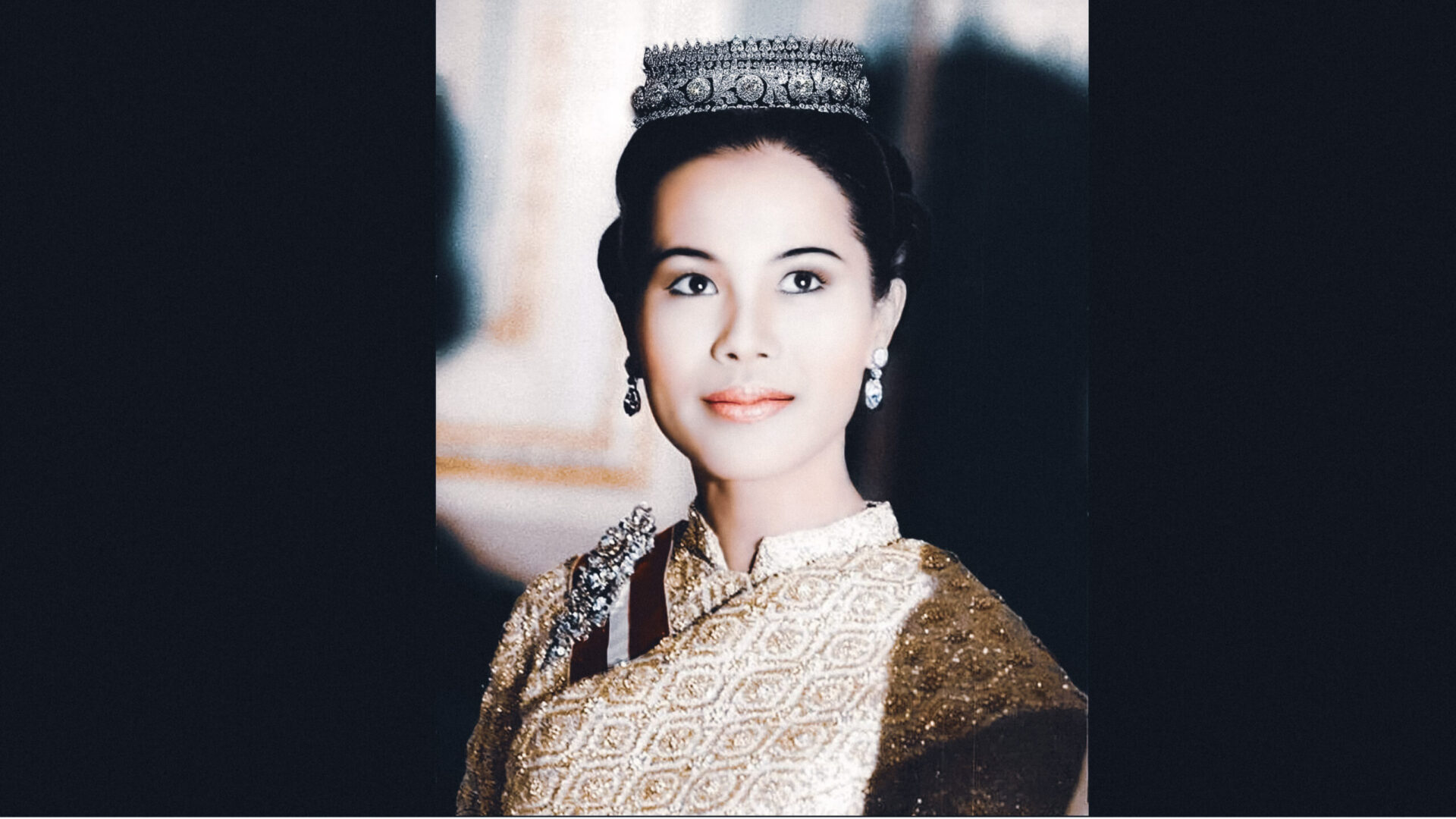ชาร์ล-มาเรีย กุสตาฟ เลอ บอง (Charles-Marie Gustave Le Bon)
ผู้เขียน The Crowd : A Study of the Popular Mind
เลอ บอง เกิดเมื่อวันที่ 7 พฤษภาคม 1841 (Nogent-le-Rotrou, France) ในโนเtจนต์-เลอ-รอตรัว, ฝรั่งเศส พ่อของเขาชื่อณอห์น (Jean-Marie Charles Le Bon) เป็นข้าราชการท้องถิ่น ส่วนแม่ชื่อแอนเน็ตต์ (Annette Josephine Eugenit Tetiot Desmarlinais)
เมื่ออายุ 8 ปี พ่อของเขาได้รับตำแหน่งใหม่ ทำให้ครอบครัวต้องย้ายออกจากโนเจนต์ มาอยู่ในปารีส และเขาก็ไม่เคยกลับไปที่บ้านเกิดอีกเลย
เลอ บองเรียนชั้นมัธยมที่โรงเรียนมัธยมในตูร์ (Tours High School)
1860 เข้าเรียนคณะแพทย์ที่มหาวิทยาลัยปารีส (University of Paris)
1866 สำเร็จการศึกษา แต่ก่อนที่จะเรียนจบเขาได้มาเป็นหมออินเทิร์นที่โรงพยาบาลปารีส (Hotel-Dieu de Paris) โรงพยาบาลที่เก่าแกที่สุดในกรุงปารีส
หลังจากเรียนจบเลอ บองได้ฝึกภาษาอังกฤษและเยอรมันด้วยตัวเอง ด้วยการอ่านงานเขียนของเช็คเปียร์
1870 เกิดสงครามระหว่างปรัสเซีย-ฝรั่งเศส (Franco-Prussian War) เลอ บองจึงได้เข้าเป็นแพทย์ทหารในกองทัพ เขาทำงานในหน่วยรถพยาบาล
1871 ฝรั่งเศสแพ้ในสงครามกับปรัสเซีย เลอ บอง จึงได้มีโอกาสเห็นช่วงเวลาของการเกิดปารีสคอมมูน (Paris Commune)
หลังสงครามเขาออกเดินทางท่องเที่ยวไปยังเอเชียและแอฟริกาตอนเหนือ เพราะเกิดความสนใจเกี่ยวกับมานุษวิทยาซึ่งได้รับอิทธิพลมาจากงานเขียนของดาร์วิน (Charles Darwin), สเปนเซอร์ (Herbert Spencer)
เลอ บองเดินทางไปยังประเทศแถบตะวันออกกลาง, อินเดีย, และเนปาล โดยการเดินทางส่วนใหญ่ของเขาอาศัยม้าเป็นพาหนะ
1879 เขาได้รับเลือกให้เป็นสมาชิกของสมาคมมานุษยวิทยาแห่งปารีส (Societry of Anthropology of Paris) และได้รับรางวัล Godard Prize จาก French Academy of Sciences จากผลงานเขียน Recherches anatomiques et mathématiques sur les variations de volume du cerveau et sur leurs relations avec l’intelligence (Research on Anatomical and mathematical on the laws of sariation of the volume of the brain and their relationship with intelligence)
1884 เขียน Les Civilisations de I’Inde และ La Civilisation des Arabes
เขาได้ทุนจากรัฐบาลฝรั่งเศสให้เดินทางมายังเอเชียเพื่อศึกษาอารยธรรมท้องถิ่น ซึ่งทำให้เขามีผลงานเขียนออกมาหลายเล่มจากการเดินทางมาเอเชียครั้งนี้ เช่น Civilisation des Arabes (1884), Voyage au Nepal (1886), Les Civilisations de I’Inde (1887)
1888 ลาออกจากสมาคมมานุษยวิทยาแห่งปารีส
1896 เขาบันทึกการสังเกตุเห็นแสง “black light” (ซึ่งไม่ใช่ black light ที่รู้จักกันในปัจจุบัน) แต่เชื่อว่าอาจจะเป็นรังสีคาโทด หรืออาจเป็นรังสีเอ็กซ์เรย์
1892 เดินทางกลับมาถึงยังปารีส
1894 Lois psychologiques de l’évolution des peuples (The Psychology of Peoples)
1895 Psychologie des foules (The Crowd : A Study of the Popular Mind)
The Psychology of Peoples และ The Crowd : A Study of the Popular Mind เป็นหนังสือที่ประสบความสำเร็จมากในยุคนั้น และเลอ บองถือเป็นนักจิตวิทยาคนแรกๆ ที่เขียนเกี่ยวกับจิตวิทยามวลชน ซึ่งมีอิทธิพลต่อนักปฏิวัติหลายคน อย่างฮิตเลอร์ (Adolf Hitler), เลนิน (Vladimir Lenin), มุโสลินี (Mussolini)
มุโสลินีได้อ่านหนังสือของเลอ บองตั้งแต่ยังหนุ่ม และได้เขียนจดหมายหาเลอ บอง เมื่อเขามีอำนาจ ซึ่งข้อความหนึ่งในจดหมายที่เลอ บอง เขียนตอบมุสโลลินี เมื่อถูกนิยามของคำว่า “ประชาธิปไตย”, เลอ บอง ได้ตอบว่า “รูปแบบหนึ่งของรัฐบาลซึ่งพยายามสร้างภาพลวงตาว่าประชาชนเป็นผู้มีอำนาจ / is the [form of] government which gives or seeks to give the people the illusion of being sovereign”
ส่วนอดอล์ฟ ฮิตเลอร์ มีการนำทฤษฏีของเลอ บอง ไปใช้เขียน Mein Kampf (ท. การต่อสู้ของข้าพเจ้า)
1902 เขาได้รับการสนับสนุนจากเออร์เนสต์ ฟลามเมเรียอง (Ernest Flammarion) ให้เป็นบรรณาธิการในโครงการรวมรวมงานเขียนทางวิทยาศาสตร์มาตีพิมพ์เป็นซีรีย์ของหนังสือชุด Library of Scientific Philosophy (Bibliothèque de philosophie scientifique) ซึ่งระหว่างที่เลอ บอง มีชีวิตอยู่ ได้พิมพ์หนังสือชุดนี้ออกมาได้ทั้งหมด 222 เรื่อง
ในปีนี้เลอ บองยังริเริ่ม การจัดให้มีการนัดรับประทานอาหารเที่ยงกันทุกๆ วันพุธ โดยที่เขาเชิญนักวิทยาศาสตร์และนักคิดแถวหน้าของฝรั่งเศสให้มาพบปะพูดคุยกัน
1903 ได้รับการเสนอชื่อเข้าชิงรางวัลโนเบลในสาขาฟิสิก แต่ก็ไม่ได้ชนะรางวัล
1905 หนังสือ L’Évolution de la Matière (The Revolution of Matter) เลอ บอง ได้เขียนแนวคิดทางฟิสิกของเขาว่า สสาร-พลังงาน สามารถเปลี่ยนไปมาระหว่างกันได้ (mass-energy equivalence) ซึ่งต่อมาในปี 1922 เขาได้เขียนจดหมายไปถึงไอสไตน์ (Albert Einstein) บ่นให้ฟังว่าชื่อของตัวเขาเองกลับไปได้รับการยอมรับในเรื่องนี้ ไอสไตน์จึงได้เขียนตอบกลับมาว่า ทฤษฏีเรื่องการเปลี่ยนไปมาระหว่างมวลและพลังงานนั้น ถูกนำเสนอก่อนหน้านั้นนานแล้ว เพียงแต่ทฤษฏีสัมพันธภาพของไอสไตน์นั้นถูกใช้เพื่อพิสูจน์
1907 L’Évolution des Forces (The Evolution of Forces) เลอ บองเขียนทำนาเกี่ยวกับยุคที่พลังงานนิวเคลียร์จะสามารถถูกนำมาใช้
1908 เขาพักการวิจัยทางฟิสิกและกลับมาศึกษาจิตวิทยาอีกครั้งหนึ่ง โดยมีผลงานเขียนออกมาหลายเล่ม อย่าง Les Opinions et les croyances, Aphorismes du temps present
1920 เกษียณจากมหาวิทยาลัยปารีส และใช้ชีวิตปั่นปลายในการเขียนหนังสือที่บ้านพักของเขา
1929 ได้รับเหรียญ Grand-Croix of the Legion of Honour
1931 13 ธันวาคม, เสียชีวิตในมาร์น-เล-โคเก็ตต์ (Marnes-la-Coquette) ขณะมีอายุ 90 ปี ร่างของเขาถูกฝังที่สุสานเปร์-ลาเฌ (cimetière du Père-Lachaise )
ผลงานเขียน
- La mort apparente et inhumations prématurées (Apparent Death and Premature Burials, 1866)
- Traité pratique des maladies des organes génitaux-urinaires (Practical Treatise of Diseases of the Genitourinary System, 1869)
- La vie (Traité de physiologie humaine(Life (Treatise of Human Physiology), 1874)
- Histoire des origines et du développement de l’homme et des sociétés (History of the Origins and Development of Man and Society,1877)
- La Méthode graphique et les appareils enregistreurs (The Graphical Method and recording devices, 1878)
- Recherches anatomiques et mathématiques sur les variations de volume du cerveau et sur leurs relations avec l’intelligence (Anatomical and mathematical research on the changes in brain volume and its relationships with intelligence, 1879)
- La Fumée du tabac (Tobacco smoke,1880)
- Voyage aux Monts-Tatras (Travel to Tatra Mountains,1881)
- L’Homme et les sociétés (Man and Society,1881)
- La Civilisation des Arabes (The World of Islamic Civilization, 1884)
- Voyage au Népal (Travel to Nepal,1886)
- Les Civilisations de l’Inde (The Civilisations of India, 1887)
- Les Levers photographiques (Photographic surveying, 1888)
- Les Premières Civilisations de l’Orient (The First Civilisations of the Orient,1889)
- L’Équitation actuelle et ses principes. Recherches expérimentales (Equitation: The Psychology of the Horse, 1892)
- Les Monuments de l’Inde (The Monuments of India, 1893)
- Les Lois Psychologiques de l’Évolution des Peuples (The Psychology of Peoples, 1894)
- Psychologie des Foules (The Crowd: A Study of the Popular Mind,1895)
- Psychologie du Socialisme (The Psychology of Socialism,1896)
- Psychologie de l’éducation (The Psychology of Education, 1902)
- L’Évolution de la Matière (The Evolution of Matter, 1905)
- La naissance et l’évanouissement de la matière (The birth and disappearance of matter, 1907)
- L’Évolution des Forces (The Evolution of Forces,1907)
- La Psychologie politique et la défense sociale (Psychology of Politics and Social Defense,1910)
- Les Opinions et les croyances (Opinions and Beliefs,1911)
- La Révolution Française et la Psychologie des Révolutions (The French Revolution and the Psychology of Revolution, 1912).
- Aphorismes du temps présent (Aphorisms of Present Times, 1913)
- La Vie des vérités (Truths of Life, 1914)
- Enseignements Psychologiques de la Guerre Européenne (The Psychology of the Great War,1915)
- Premières conséquences de la guerre: transformation mentale des peuples First Consequences of War: Mental Transformation of Peoples, 1916)
- Hier et demain. Pensées brèves (Yesterday and Tomorrow. Brief thoughts, 1918)
- Psychologie des Temps Nouveaux (The World in Revolt, 1921)
- Le Déséquilibre du Monde (The World Unbalanced, 1923)
- Les Incertitudes de l’heure présente (The Uncertainties of the Present Hour, 1924)
- L’évolution actuelle du monde, illusions et réalités (The Current Evolution of the World, Illusions and Realities, 1927)
- Bases scientifiques d’une philosophie de l’histoire (Scientific Basis for a Philosophy of History, 1931)
